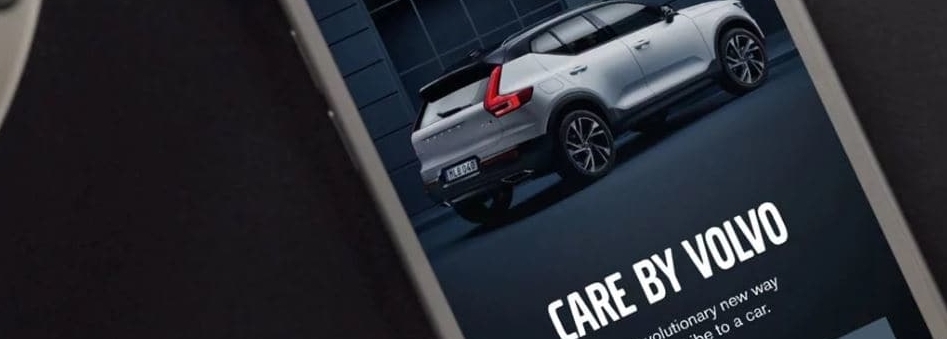77. Ralph Welborn on the Ecosystem-Based Strategy
Business strategy and business model design has traditionally been firm-centric. Entrepreneurs are called upon to establish firms, to make the firm the locus of value creation through value proposition design, assembly of resources, and production; and to ensure competitive advantage in comparison to rival firms pursuing the same customers.
Key Takeaways & Actionable Insights
There is an entirely different way to approach economic value creation (see our E4E Knowledge Map). Ralph Welborn discusses this new approach for the 2020s on the Economics For Entrepreneurs podcast, and in his book Topple: The End of the Firm-Based Strategy and the Rise of New Models for Explosive Growth (Buy It On Amazon).
The innovation of the new strategic approach is the focus on ecosystems instead of firms. The new approach preserves — and, in fact, elevates and intensifies — the Austrian business model principle of customer sovereignty and the deep understanding of the customer as the first step on the value creation path. But it changes the perspective to the ecosystem level.
Defining the business ecosystem.
Ralph defines a business ecosystem as the methods of orchestrating capabilities from diverse organizations to capture new sources of value. Austrians see entrepreneurs as orchestrators, and so we are very comfortable with this starting point. We are equally comfortable with the core analytic action Ralph proposes: studying where value is being created and destroyed within an ecosystem, and taking steps to capture emergent new value.
As an example, think of a consumer’s nutrition ecosystem, and how it might have changed — that is, how new value has been created and old value destroyed — over the past twenty years. In the past, value was created by Big Food firms (think Kraft Heinz) via low prices, convenience packaging (e.g. canned foods and frozen foods), standardization, high volume, and supermarket distribution. But then some consumers sought new value in fresh food, organic food, less processed food, fewer preservative ingredients and fewer additives and new recipes. New brands took advantage of the emergent value opportunities. And even more recently, new value has been created by delivery platforms that can bring the food directly to the home, and escape the “war in the store” for shelf space and distribution slots. You can begin to appreciate how a business ecosystem such as “consumer nutrition” can change, how new value creation can emerge, and how entrepreneurs might take new action.
Ralph mentions another example in his book: the ecosystem in which automobile companies operate has changed from transportation to mobility. The companies must now deliver value in areas such as in-car productivity, entertainment, communications, connectivity and more.
In order to implement an ecosystem-based strategy, Ralph recommends the following steps:
First, shift your unit of focus.
Business schools have told us that our point of focus should be our firm, or corporation, or business unit or department: to maximize the performance of that unit in comparison to other firms or units.
The shift is to focus not on the firm but on the ecosystem in which you and your customers engage, in order to develop a new value perspective.
Step one in business is always to identify and know the customer. The added perspective is to identify, and study, the ecosystem in which you and the customer are engaged.
Second, see the ecosystem as a locus of shifting value.
Once you’ve defined it, observe the ecosystem as a network of economic interactions where value is being created and destroyed via changing customer preferences and needs. A consequence of these changes will be shifts in the competitive environment, and you can observe these too, as clues.
To continue with our nutrition ecosystem as an example, you can observe the shifts in market share between traditional and innovative food companies, and use these shifts as a signal of changing consumer preferences. Of course, you can also simply observe consumer behavior and conduct traditional research. Plug all of this observation into a dynamic ecosystem perspective: where and how is value being created and destroyed in the ecosystem?
Ralph’s memorable phrase is: value seen is value captured. If you can see where value is shifting and where new value is being created (or will be created in the future) you will be able to capture it.
Third, answer the questions: “How can I fit in to the ecosystem?” and “How can I contribute to the ecosystem?”
The changed perspective of the ecosystem approach is the shift from “how can my firm compete with other firms?” to “how can I qualify to be invited into the customer’s ecosystem?” If you have a new line of organic, healthy food products for health- and diet-conscious consumers, how can you engage with the communication channels within the ecosystem to make those consumers aware, how can you utilize those channels to communicate your benefits, how can you engage with ecosystem retailers and distributors to make it convenient for the consumer to buy your physical products, and how can you participate in the consumer’s preparation systems to provide extra service in addition to your physical product? Where is new value emerging? Where is old value being destroyed? How can you take advantage of the shifts?
The answer to the question “How can I contribute to the ecosystem?” requires an analysis and articulation of what are the capabilities required to meet new needs, who has those capabilities (if your firm does not have them all), and how can you orchestrate these capabilities in service of those needs? Perhaps home delivery is required for ultimate customer convenience. Who does that and how can you orchestrate that capability on the customer’s behalf? Perhaps food preparation videos will help the customer get the most value from your product — who can prepare the content (a celebrity chef, perhaps) and which is the best platform to host and deliver the content to the kitchen? Perhaps your packaging can be recycled — how can you orchestrate that to make it convenient for your customer (as Nespresso does, for example, with recycling bags for their capsules, which can be mailed back free, or dropped off at a Nespresso boutique).
To fit in and contribute, choose a bundling or un-bundling strategy.
Austrian economics directs entrepreneurs to assemble resources to facilitate customer value in a unique manner. In the book Topple, Ralph Welborn calls this a bundling versus unbundling decision. If you decide to be a bundler, you improve customer value by providing multiple services around the desired benefit — such as amazon does with retailing and delivery, making shopping more convenient. Unbundling refers to a focus on a single benefit-delivering capability, such as manufacturing a new organic food product that is clearly differentiated from the preservative-laden portfolio of the Big Food company. You can choose to be a bundler or an un-bundler based on how you want to deliver value to customers.
Fourth, audit your own capabilities and identify the 20% that deliver the majority of your value.
The capabilities underlying your product or service (skill sets, software, distribution, customer relationships, media channels, process) decay over time, often at an accelerating rate. Ralph points out that entrepreneurs should be creating new capabilities continuously, and making those new capabilities into the 20% that drive explosive growth. This is pure Austrian Capital Theory — identifying the business assets that most contribute to customer satisfaction and keeping them refreshed and up-to-date as customer preferences change.
Ralph cites Uber as an example: the new capabilities are mobile connectivity (from carriers), payment transactions (banks and credit card companies) and dynamic GPS and mapping software (from Google and others).
These capabilities are:
- Centered around what the customer wants to do.
- Taking friction out of what it is they want to do, making it extraordinarily convenient.
- Orchestrating different capabilities from different types of actors and organizations.
- Reserving the enabling orchestration capabilities to Uber.
The implications for business are to: (i) identify your assets and their half-life — the rate of decay; (ii) identify where to play in your newly understood ecosystem and how to develop the new assets and capabilities to do so. This is a continuing process.
Free Downloads & Extras From The Episode
“An Ecosystem-Based Development Strategy” (PDF): Click Here to Download
Ralph Welborn’s book, Topple: The End of the Firm-Based Strategy and the Rise of New Models for Explosive Growth: Buy It On Amazon
Start Your Own Entrepreneurial Journey
Ready to put Austrian Economics knowledge from the podcast to work for your business? Start your own entrepreneurial journey.







